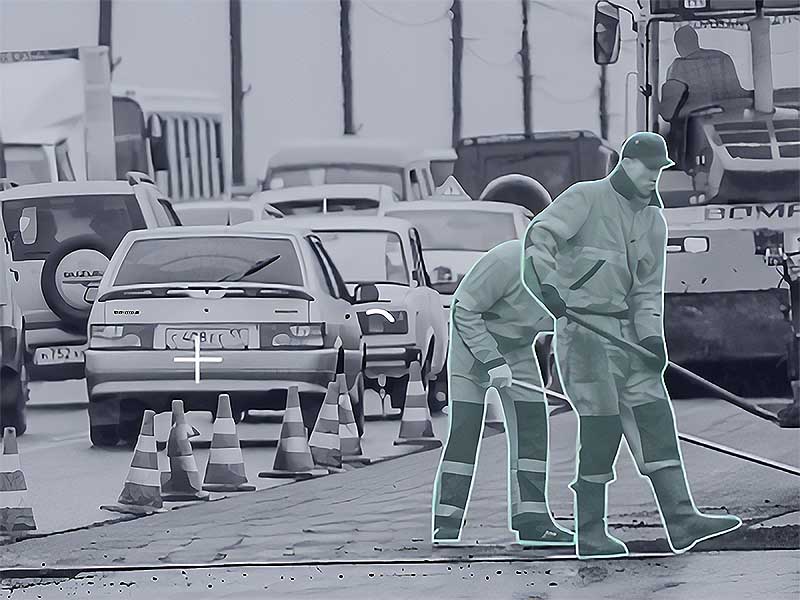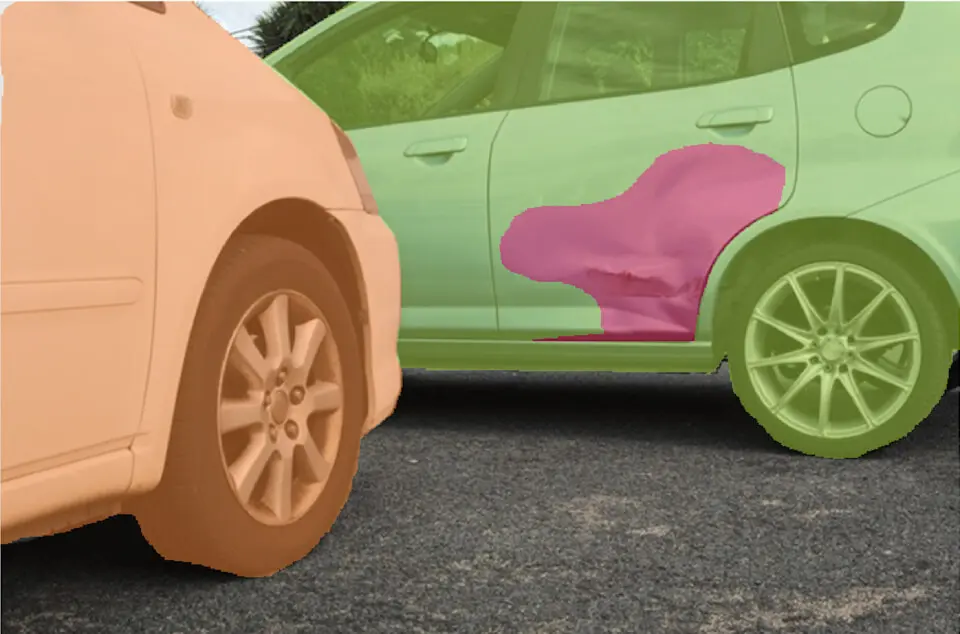Image Annotation Solving Real-World Problems

In our previous series of blogs, we have studied Image Annotation and its basics, covering Introduction to Image Annotation, highlighting its critical role in Why Image Annotation is Crucial for AI and ML, and presenting an overview of Types of Image Annotation.
We also underwent techniques encompassing Manual Image Annotation, Semi-Automatic Annotation Tools, and Best Practices for Automatic Image Annotation.
We also read about challenges and solutions, tackling Ambiguity and Subjectivity in Annotation, addressing the delicate balance of Scale and Cost in Annotation Projects and establishing Quality Assurance in Image Annotation.
We went through Industrial applications featuring Image Annotation in Autonomous Vehicles, Enhancing Healthcare with Image Annotation, E-commerce and Retail, Image Annotation for Agriculture, Geospatial Analysis, and practical insights into Image Annotation in Security and Surveillance.
Then we saw the importance of regulations and ethics with sections on GDPR and Data Privacy in Image Annotation, Addressing Bias and Fairness in Annotation, and Ethical Guidelines for Image Annotation Projects.
Lastly, we had a discussion on the future, exploring Integrating AI in Image Annotation, the potential of Real-Time Image Annotation, emerging trends in Annotating 3D Data, and the synergy of Enhanced Data Augmentation with Image Annotation.

Figure: Labellerr - Image Annotation in Vehicle Surveillance
In this blog, we will see some real-life case studies where a problem from various industries (be it Automotive or fashion) has been solved using good image annotation services. Plenty of startups are working with AI-Products to solve real-world problems, or at least to ease its usage. Data Annotation plays a crucial role in this.
Table of Contents
- Image Annotation Services for Global Skin Cream Manufacturer
- Streamlining Car Damage Detection
- Annotating Dynamic Objects in Camera and LIDAR Data for Autonomous Vehicles
- Labellerr's Impact on AI Skin Analysis for Personalized Beauty Solutions
- Conclusion
- Frequently Asked Questions
Image Annotation Services for Global Skin Cream Manufacturer
Flatworld Solutions (FWS) provided image annotation services to a prominent skin cream manufacturer based in Switzerland, operating across 40 countries.
The client, known for producing consumer and medical skin health brands, sought assistance in annotating portrait images for a new face cream product, facing challenges in identifying specific skin conditions and creating precise bounding boxes.

Figure: AI in Skin Care
Client Profile
The client, with headquarters in Switzerland and 50 operational sites, boasts seven manufacturing locations and over 1,200 employees. Their focus on dermatology initiatives includes product innovations addressing skin cancer, aging, dermatitis, psoriasis, rosacea, and acne.
Client Requirements and Challenges
The client aimed to outsource an image annotation project involving several thousand portrait images. Challenges included the difficulty of differentiating between various skin conditions and the precision required in drawing small bounding boxes around impacted areas—the project aimed to support the marketing of a new face cream product for women.
Solution Development by FWS
FWS devised a comprehensive solution to address the challenges, starting with a free quality test. The trial team, comprising an account manager and an image annotation specialist, underwent remote training facilitated by the client.
The image annotation process utilized a customized labeling tool, and the annotated images were delivered through Google Drive.
Quality Test and Contract Approval
The quality test in the project involved annotating 100 images and was successfully completed within a day.
Once the trial was successful, the client then approached to annotate 5,000 images within a month. Three image editing specialists joined the project team, and the entire assignment was completed in eight business days.
Final Results
The project showcased the specialized benefits of precise image annotation services.
FWS played a pivotal role in improving the client's marketing and manufacturing processes by accurately identifying the location and frequency of skin conditions in several thousand photos.
Streamlining Car Damage Detection
In this project, the aim was to develop an AI solution capable of not only identifying car damages but also offering additional services like facilitating insurance claims, assessing the extent of damage, predicting necessary repairs, and providing other relevant information.

Figure: Vehicle Damage Detection
To ensure the precision of the AI system, they required the annotation of a dataset comprising 36,000 images. Accurate labeling and precise geometry of 2D Bounding Boxes were critical to maintaining the integrity of the damage assessment.
Detection of various car damage types, such as scratches, crashes, and broken parts, was imperative, with classification according to a specified taxonomy. The allocation of each damage type through 2D bounding boxes, especially in images with multiple objects, demanded careful attention to object recognition and classification.
Given Mindy Support's extensive experience in Automotive and Insurance projects and expertise in the relevant subject matter, the client sought their assistance for data annotation services.
The client valued Mindy Support's portfolio and past experiences in similar projects, relying on their ability to recommend suitable data annotation tools, thus relieving them of the burden of tool selection minutiae.
Mindy Support took charge of the entire process, including team recruitment, training, tool selection, and other processes, as per the client's preference to have minimal involvement.
The focus was on gathering instructions and necessary data from the client, with Mindy Support taking responsibility for team training, quality control, and delivering the output in the required format.
The client aimed for a quality score exceeding 98%, leading to multiple stages of annotation validation and quality control throughout the project.
Results
- Annotation of 36,000 images.
- Achievement of a quality score exceeding 98%, with minimal calibration by the client.
- Project duration: 2.5 years.
Annotating Dynamic Objects in Camera and LIDAR Data for Autonomous Vehicles
The project was conducted for RMSI Pvt Ltd, a prominent player in the global Autonomous Driving, Advanced Driving Assistance Systems (ADAS), and Active Safety development sector.
The primary objective was to create precise AI training datasets by annotating dynamic objects in Camera and LIDAR data.

Figure: (2-D) Bounding Box and Lidar Annotation (3D Point Cloud View)
This aimed to enhance the performance of autonomous vehicle perception systems, enabling accurate anticipation of various objects like vehicle types, pedestrians, and animals. The objective was to equip self-driving cars with the capability to localize themselves in the environment, identify moving objects, and track them effectively.
Objective
RMSI Pvt Ltd sought a reliable partner to annotate features in both 2D camera images and 3D LIDAR data. The focus was on generating high-quality AI training data crucial for the optimal functioning of autonomous vehicle perception systems.
The annotated HD Map data would play a vital role in predicting and recognizing diverse objects, contributing to the development of advanced automated driving systems.
Execution and Benefits
RMSI Pvt Ltd, with its expertise in Image and LIDAR annotation, successfully annotated dynamic objects, including vehicles, vulnerable vehicles, pedestrians, and animals, in 2D camera images and 3D LIDAR scenes.
The annotation process involved creating different classes, uploading images and data, identifying objects, and applying 2D and 3D bounding boxes. The careful annotation ensured a 98% quality score, meeting the company's high standards.
The project not only delivered accurate and reliable annotated datasets but also showcased the capability of RMSI Pvt Ltd to provide end-to-end solutions.
The company benefited from a hassle-free process, allowing them to focus on the project's inputs and receive outputs in the desired format. The success of the initial stage led to additional data annotation tasks, showcasing the long-term partnership between RMSI Pvt Ltd and the client.
The entire project spanned over 2.5 years, resulting in the annotation of 36,000 images and achieving the company's quality goals with minimal calibration on the annotation approach.
Labellerr's Impact on AI Skin Analysis for Personalized Beauty Solutions
In the domain of the aesthetics industry with its Advanced AI SkinTech Technologies, particularly in dermatology, aesthetics, and skin care, the AI Skin Analyzer provides users with personalized product recommendations and detailed skin analysis reports. The recent addition, the Melasma and hyperpigmentation Model, measures pigmented lesions based on the MASI index.

Figure: AI Skin Analyzer
Challenge
Dealing with AI Skin Diagnostic Solutions and computer vision models for skin analysis, the client faced the challenge of classifying skin conditions in facial images.
The focus was on Acne, Pigmentation, Crow’s Feet, Fine Lines and wrinkles, and Eye Circles. Around 1000 facial images with diverse skin problems were provided for classification.
Labellerr's Solution
Labellerr proved essential for facial dot annotation, offering an intuitive interface for annotators to mark facial dots related to different skin issues.
The platform's quick review feature ensured accuracy, inter-annotator agreement, and consensus-based tagging. Data analysis charts helped identify outliers and distinguish advertisements.
Results
Labellerr significantly improved the beauty company's skin analysis process. Accurate facial dot annotations provided deep insights into users' skin issues, allowing the creation of personalized analysis reports.
This information empowered the beauty company to offer tailored product recommendations, addressing individual skin concerns effectively. Users benefited from a more precise skincare experience, achieving healthier and radiant skin.
Conclusion
In this journey exploring image annotation, we've seen its vital role and future trends. Real-life stories illustrate its impact.
Flatworld Solutions helped a Swiss skincare brand with precise image labels. Mindy Support's 2.5-year project achieved 98% accuracy in car damage detection. RMSI Pvt Ltd annotated for autonomous vehicles, ensuring safety.
Labellerr transformed skincare, improving beauty product suggestions. These stories show image annotation's practical power, making work easier and better in different fields. It's not just about pictures; it's about solving real problems and helping businesses and technology move forward.
Frequently Asked Questions
1. What does image annotation involve in machine learning?
In machine learning, image annotation is the automated assignment of metadata, such as captions or keywords, to a digital image by a computer system. Data labelers employ tags or metadata to specify features of the data provided to an AI or ML model, enabling it to learn and recognize objects in a manner similar to human perception.
2. What are the use cases of Image Annotation?
In the context of computer vision, a straightforward example of image annotation is labeling an image with a descriptive phrase that indicates the objects depicted. For instance, if the image contains a cat, you would annotate it with the label "domestic house cat."
This process is commonly known as image classification or tagging, where annotations provide information about the content of the image for training machine learning models to recognize specific objects.

Simplify Your Data Annotation Workflow With Proven Strategies
.png)


